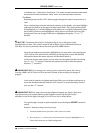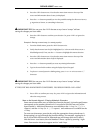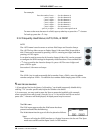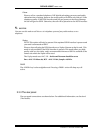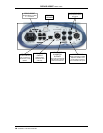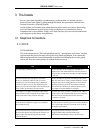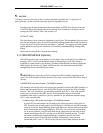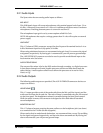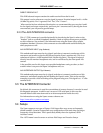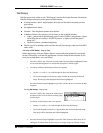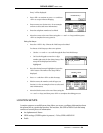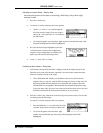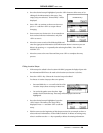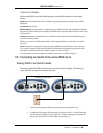
ZEPHYR
XPORT
USER’S GUIDE
18 CHAPTER 3 - THE DETAILS
3.2.1 Audio Inputs
The Xport mixer has two analog audio inputs as follows:
MIC INPUT
This XLR female input will accept microphones with nominal output levels from -53 to -
43 dBu. A Phantom Power source of 12 volts at 10 milliamps will power most Condenser
microphones. Enabling phantom power is covered in section 6.3.
The microphone input gain is set by a menu option called Mic Gain.
NOTE: Microphones that require a voltage greater than 12 volts will require an external
power supply.
LINE INPUT
This ¼" balanced (TRS) connector accepts line level inputs with nominal levels of +4 to -
9 dBu. Maximum input level (clip point) is 20 dBu.
When using unbalanced sources we recommend using pin 2 and 3 to connect the signal
and ground, respectively. By leaving pin 1 unconnected, you will prevent ground loops.
The AUX INTERFACE connector can also be used to provide an additional input to the
local monitor mix. See below.
AUDIO PROCESSING
The output of the mixer is fed to the DSP section through an analog-to- digital converter.
It then passes through an Omnia ® audio processor section and from there feeds the
codec section. A menu option called Process allows the processor to be set for Voice,
Music, or Off.
3.2.2 Audio Outputs
The following audio outputs are provided (The AUX INTERFACE connector also has an
output, see below):
HEADPHONE
This ¼" output provides a mix of the send audio (from the Mic and Line inputs) and the
audio received from the far end site. The ratio of these is controlled using the Mix control
on the front panel. The headphone volume is controlled using the front panel control.
While the audio is mono, this connector is designed to drive both sides of standard
stereo headphones.
MONITOR MIX OUT
This ¼" balanced output contains the same audio as on the headphone jack (see above)
at a nominal level of +4 dBu (20 dBu clip point).
When used to feed an unbalanced destination, we recommend that you use Tip and Ring
for the signal and ground respectively, and leave the sleeve unconnected. By leaving the
sleeve unconnected, you will prevent ground loops.



